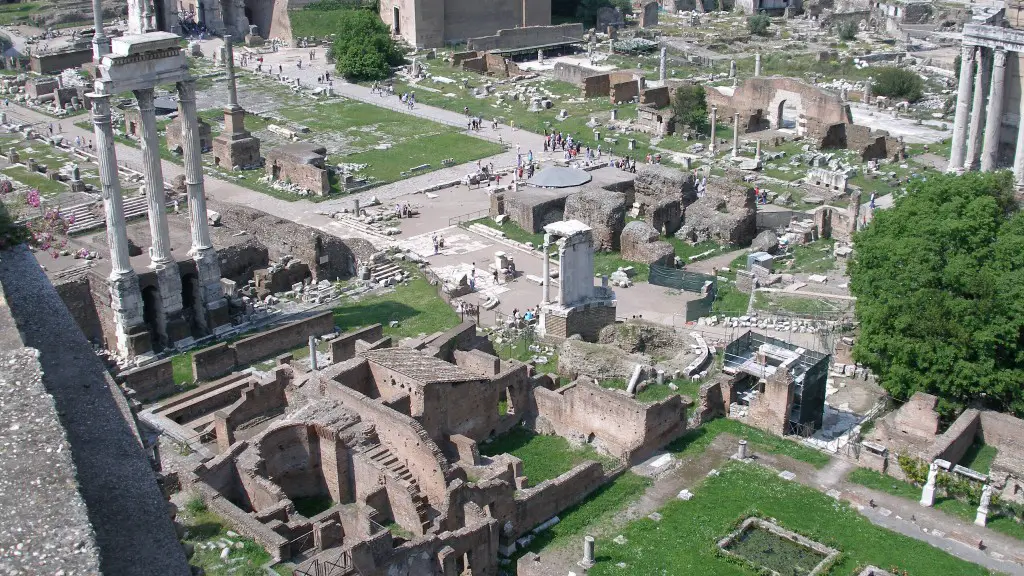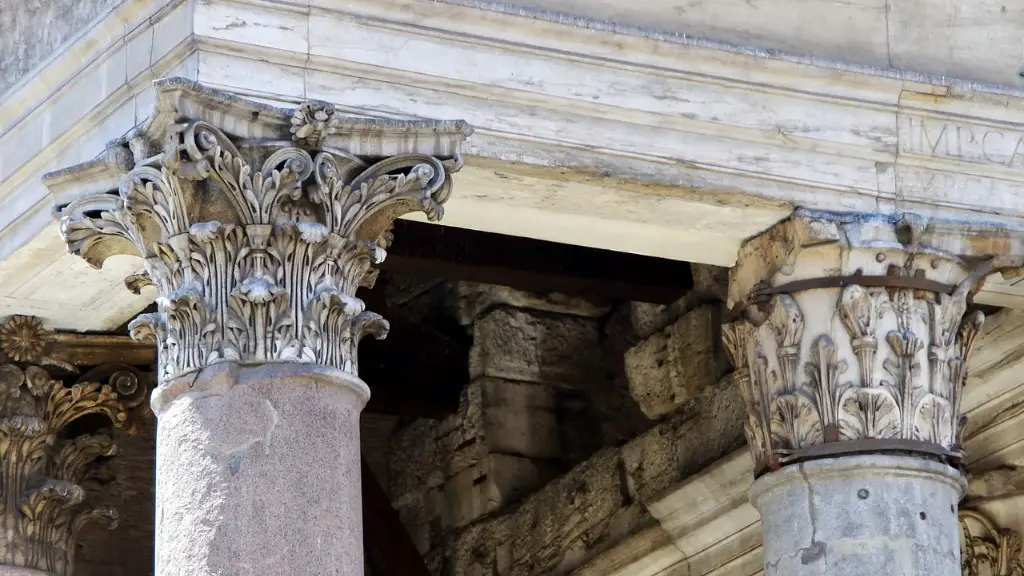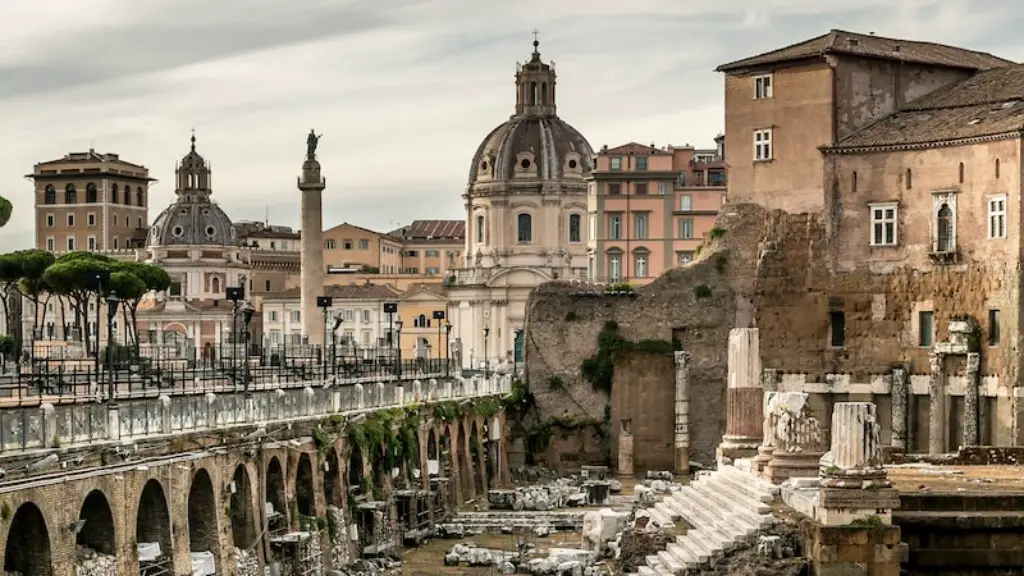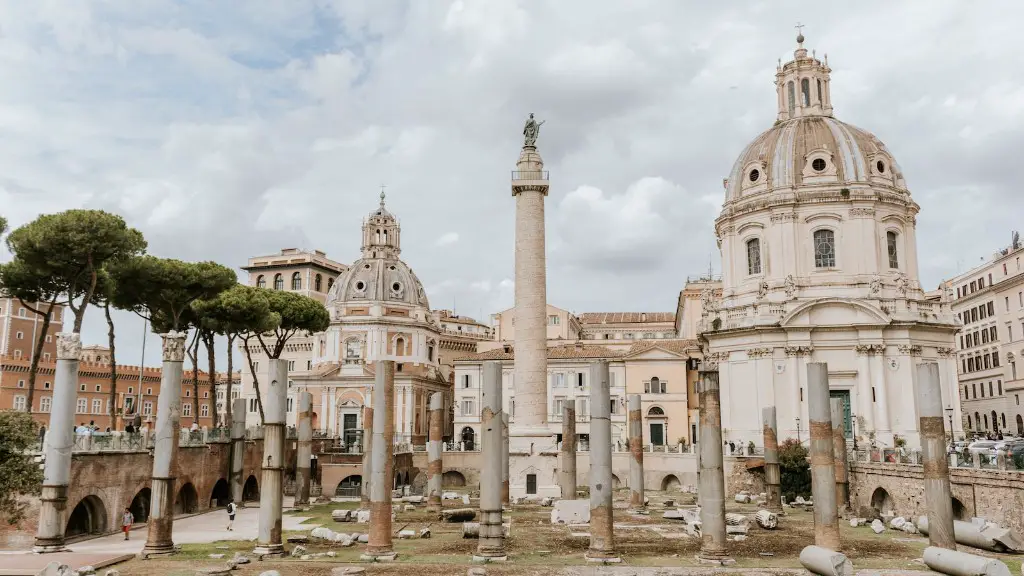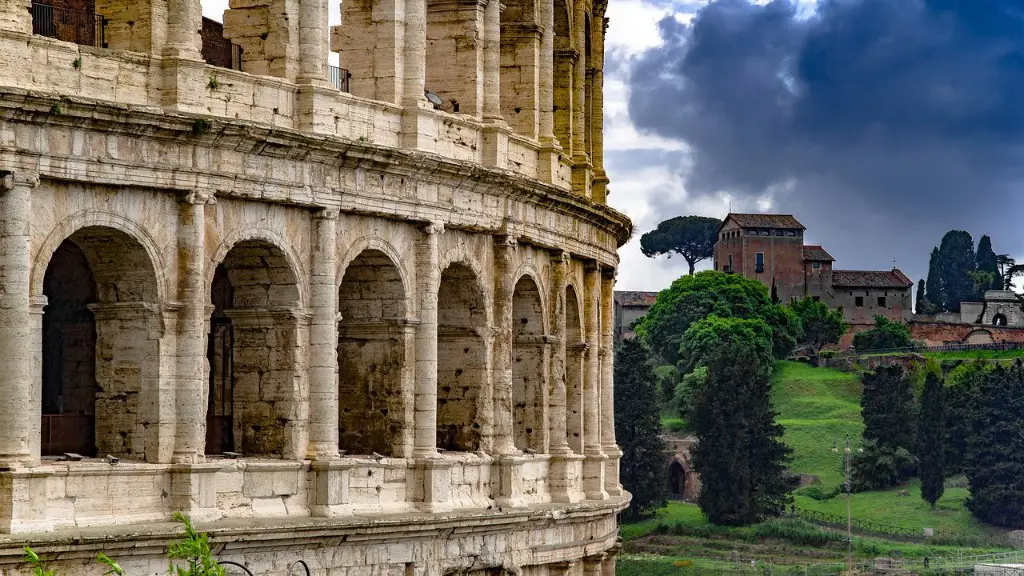Overview
Ancient Rome, one of the most influential empires in history, spanned from 752 BC to the fall of the Western Roman Empire in 476 AD. The decades and even centuries that followed witnessed further changes to the area and its landscape. Despite continued episodes of upheaval, the ongoing impact of this empire has left an indelible mark on the world today in terms of its art, politics, language and architecture. This article provides an overview of the Roman Empire and its timeline.
Rise of Ancient Rome
Ancient Rome had its beginnings in the 8th century BC, when it was founded as a small agricultural village. Over time, the village grew, eventually becoming a republic. As the republic expanded its borders and began trading with other civilizations, it eventually evolved into an empire. During its 600-year rule, the Roman Empire grew to encompass much of Europe and North Africa and Asia Minor.
The Roman Empire was characterized by a complex and organized structure of Roman law, public service and engineering, which helped enhance its organization and cohesion. It was also a period of great advancement in art, literature, and architecture. The ancient Romans were especially adept at engineering, designing roads and aqueducts and even a sewer system for their capital.
Decline and Fall of Ancient Rome
The Roman Empire began to decline in the late 4th century AD. As its population and resources diminished, its enemies began to increase. Rome was unable to defend itself against attacks and its enemies eventually began to occupy the city. In the 5th century, Rome was sacked and its capital, Constantinople, fell to the Visigoths.
The fall of Rome marked the end of the Roman Empire and ushered in a period of chaos, instability and ultimately the dissolution of the entire region. In the centuries that followed, waves of invaders, including the Ostrogoths, Lombards and Franks, settled in the area. Rome was also plagued by war and famine, resulting in further disintegration of the Roman Empire.
End of the Western Roman Empire
The Western Roman Empire officially fell in 476 AD when the last emperor, Romulus Augustus, was deposed by the Germanic chief Odovacar. This marked the official end of the Roman Empire in the west. Although it was no longer officially in power, there were still pockets of Roman culture, especially in Italy, that continued to exist for some time afterwards.
In the East, however, the Eastern Roman Empire, or Byzantine Empire, survived for another thousand years, ending in the 15th century. During this time, the Byzantine Empire maintained many of the features of its Roman predecessor, including its religious, political and legal systems.
Legacy of Ancient Rome
Despite its demise, the legacy of Ancient Rome remains. It is perhaps most evident in the legal system; much of the existing legal system in Europe and North America can be traced back to Roman law. Other aspects of Roman legacy are evident in the Europe’s languages, architecture and art, as well as its political systems. The Latin language is still used by many countries and religious institutions today, as is the Latin alphabet.
As for architecture, the ancient Romans are renowned for their engineering techniques, which were employed to build some of the world’s most iconic buildings, such as the Colosseum in Rome and the Pantheon in Venice. The Colosseum remains a popular tourist attraction today and many aspects of Roman construction still influence modern architecture.
Impact of Ancient Rome on Modern Society
The influence of Ancient Rome has had a lasting impact on modern society. Its political structures and laws are still used in many countries today, as are many aspects of its architecture. Its language, Latin, is still used in many parts of the world, and its art and literature continue to inspire people today.
The key legacies of Ancient Rome, however, are more intangible. Its mindset and the importance it placed on the rule of law, public service, and engineering have all had an enduring impact on the world today. Ancient Rome’s idea of empire also continues to have many implications today, as seen in a wide range of geopolitical contexts.
Roman Culture
The culture of Ancient Rome was one of the most diverse in the world at the time. It was a cosmopolitan culture with influences from both Middle Eastern and Greek civilizations. Its rich culture and strong sense of identity helped the Roman Empire thrive for centuries, and its influence can still be seen in modern society.
From its art and architecture to its literature and language, much of Ancient Rome’s legacy can still be seen in modern society. As the centuries pass, it is certain that the legacy of Rome will continue to shape the world around us.
Politics of Ancient Rome
The political system of Ancient Rome was complex and influential. It was a republic in which citizens had a role in governing and in making laws. The Roman senate was a powerful and influential body, responsible for managing relations between the people and their government. In addition, religious and military matters were also handled by the Roman senate.
In addition to its political structures, the Roman Empire was also known for its roads and aqueducts, as well as its engineering and technology contributions, such as the invention of concrete. The Roman army was also one of the most powerful and effective forces in the ancient world. Its strategy and tactics have been studied and emulated by military forces since.
Religion and Philosophy
Religious and philosophical beliefs were important in Ancient Rome, particularly during the republic and imperial periods. During this time, Roman religion was heavily influenced by Greek religion, with the Roman Pantheon becoming a popular center of worship. In addition, philosophical and religious debates were common in the academic centers of Ancient Rome.
Stoicism and Epicureanism, two of the most influential philosophies of Ancient Rome, had an enduring impact on the world andcontinue to influence modern thought today. Although short-lived in its rule, the legacy of Rome lives on in its religious and philosophical beliefs, which continue to shape the world’s culture.
